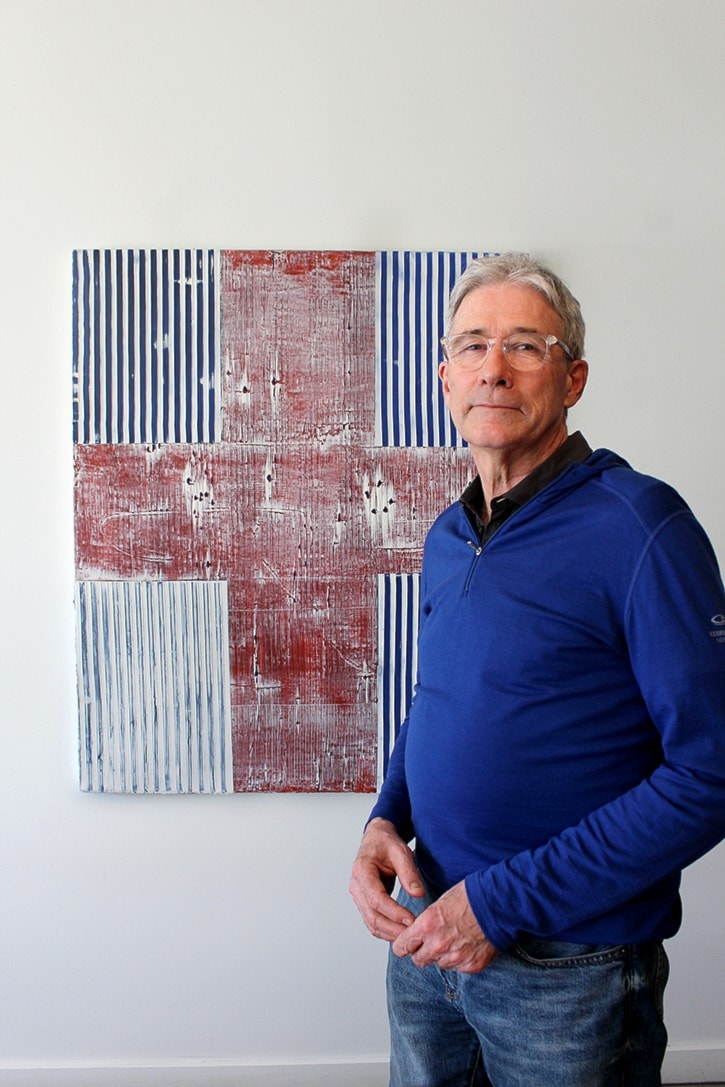He sits there proud, wide-brimmed sombrero upon his head, mustache waxed to two fine points, and a bandolier wrapped across his chest.
It’s an image from the Mexican Revolution of poor farmer Emiliano Zapata who stood up against the 35-year regime of President Porfirio Diaz.
Immortalized in the Marlon Brando film Viva Zapata, this peasant from the state of Chiapas and his Liberation Army of the South, later to be known as the Zapatistas, stood up for land reform, an issue that Mexican farmers are still fighting for to this day, until his assassination in 1919.
The image of Zapata may ring familiar to those who visited Vernon’s Triumph Coffee last year.
On the walls was a photograph of the Mexican revolutionary among other photos, placed upon large collages painted in acrylics by acclaimed Vernon artist Bryan Ryley.
At the time, Ryley was exploring revolutionary figures such as Nicaraguan Augusto Nicolás Sandino, Argentine Marxist revolutionary Che Guevera, Zapata and others. His intrigue about these men surfaced after he and his wife, Margaret, paid a visit to Mexico City.
“There is a belief by the people in the city, a sense of democracy, because of the Revolution,” said Ryley, who currently has a new exhibition up at Triumph.
“The one thing that struck me was the great celebration there; the murals, the dancing, and the parks full of families.”
While in Mexico City, Ryley was able to witness a demonstration by peasant farmers protesting the federal government about their land being taken away by multinational corporations.
“I went and photographed it. There were these Rubenesque naked Mexican women in the spotlight and men with torches and the only other people there were the cops,” said Ryley. “What intrigued me was the traffic that was moving back and forth; no one was paying attention.”
Ryley used a large four-by-eight-foot flatbed printer to print the material for his collages.
“It prints up to two-inch thick material. You can put relief (a process where protruding surface faces of the printing plate or block are inked, while recessed areas are ink free) and it makes the surfaces less sharp and more sharp in areas.”
Ryley’s explorations have taken him further abroad.
In India, he observed naked holy men (sādhu) covered in ash bathing in the Ganges River, a Hindu ritual to wash away sin.
“It made me think about how when we see someone other than us, who is different, we tend to want to push or wash them away. It’s come up now with the refugees and what’s happening in the world, where people are being maligned,” said Ryley.
Another series of paintings, entitled Four Corners, which can currently be seen at Triumph, came after Ryley spent three months in Spain and Italy. While there, he studied cruciforms and the modern paintings at the Reina Sofía Museum in Madrid. However, his explorations were cut short when he became ill in Tuscany.
“I ended up on the couch and when we came back, I spent six weeks in bed,” said Ryley. “When I started feeling better, I got a piece of paper out and started filling in the four corners of the paper and a cruciform came up.”
To create his works, Ryley uses a technique of standing above the canvas – he uses a special plywood platform if the canvas is large – then pulls the paint with a squeegee along the surface in a multi-layered fashion. This is so the dust doesn’t settle, he says.
In Four Corners, each painting came out differently – some were reflective of the Jerusalem, or Crusaders’ cross.
“The idea of Four Corners was thinking of how the Crusaders moved from Europe to the east. One painting, Shopping in Baghdad, features pinstripes like those in a Ralph Lauren suit, and the crucifix has bullet holes... It shows how crusadership is like consumerism.
“Every painting is autonomous from an event. I follow a journey in my work...Being creative doesn’t come from advantage and luxury, it comes from disadvantage. Change doesn’t happen unless you are going against the grain.”
But an artist also needs to make a living. So when Ryley, whose work has been shown in galleries, private collections and in corporate commissions in just about every major city in Canada and the U.S., was contacted by one of North America’s largest department stores to do a major commission, he couldn’t refuse.
Three years ago, Ryley was approached by his art dealer in Vancouver who said an art buyer from Nordstrom department stores had seen his work and wanted to see more.
After images of his paintings were submitted, he was commissioned to paint four large paintings for Nordstrom stores in Houston, Jacksonville, Ottawa and Calgary – the only Canadian artist to receive such a commission.
“I finished the work two years ago thinking it was a great gig, and that would be it, but Nordstrom kept coming back with a vengeance. They wanted 12 new paintings and wanted five more for their new Vancouver store,” said Ryley. “I approached both my dealers about this and asked, ‘is this normal?’ They both answered, ‘no.’”
Ryley has since delivered more paintings to the chain, including five to their flagship store in Seattle, five to Venice Beach, three to Racine, Wisc. and three to Minneapolis.
“Many of them are in the women’s shoes departments, where the goods are all on the lower racks, so my work is front and centre. It’s great exposure,” he said. “The stores are really tastefully done and the team they have are so good to work with.”
Ryley’s latest commission is a 10-by-seven-foot painting to go along with two others he has painted for Nordstrom’s Yorkdale Shopping Centre location in Toronto.
His work at Triumph Coffee in Vernon can be viewed for the next month.
